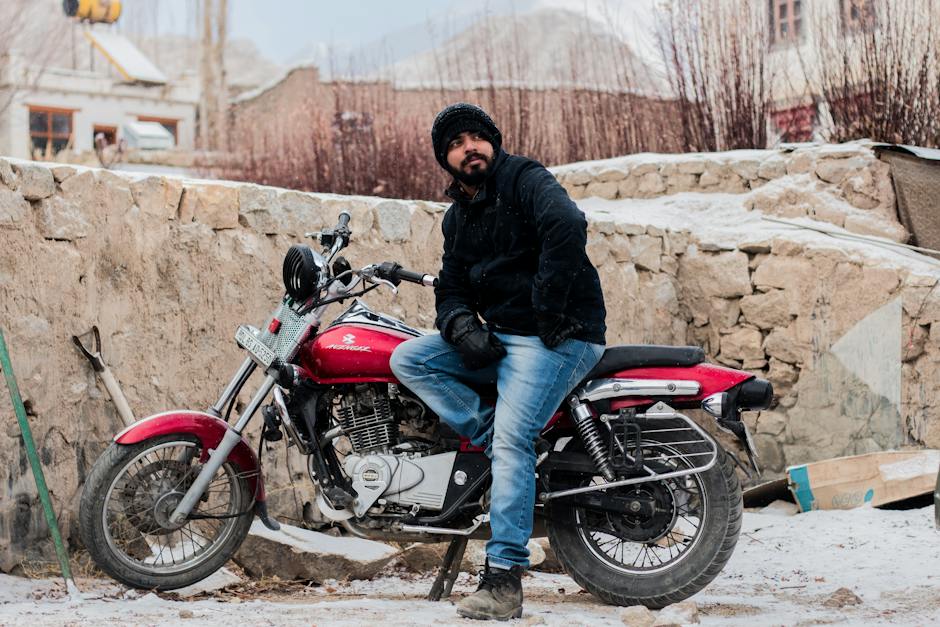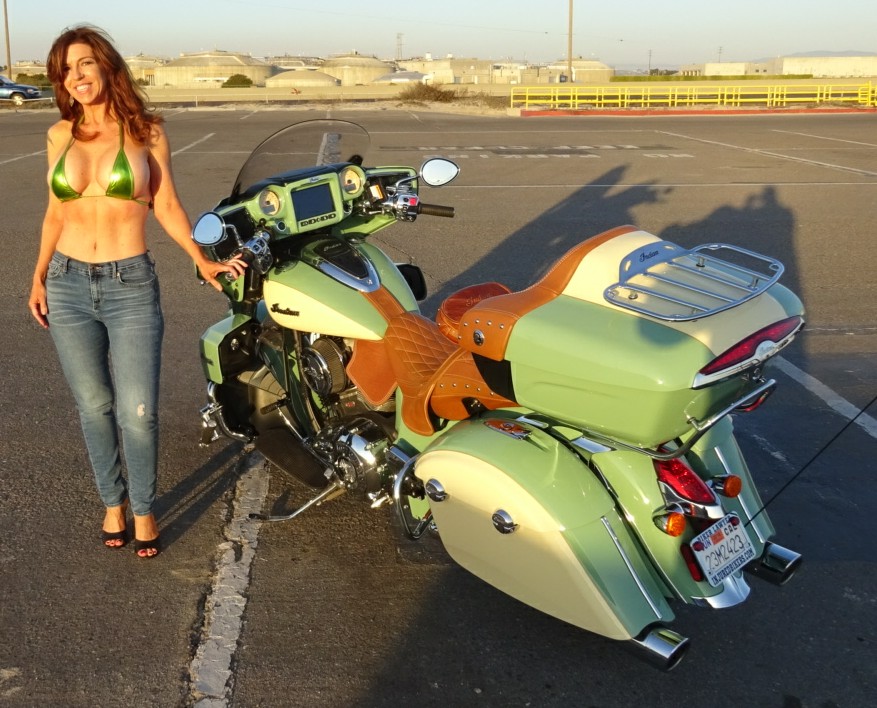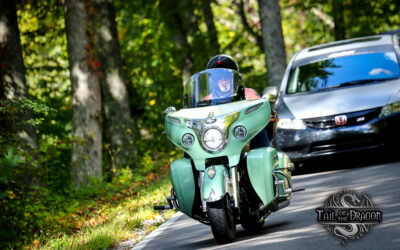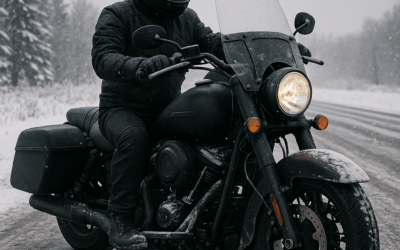Winter brings about unique challenges for motorcycle riders, particularly when it comes to traction. Whether you ride year-round, enjoy cold-weather adventures, or find yourself in winter conditions unexpectedly, ensuring optimal traction is crucial. In this blog post, we will explore the importance of bike setup and riding techniques to preserve traction on icy surfaces. Additionally, we will discuss the impact of temperature on traction and provide tips for maximizing traction during winter rides.
Preserving Traction on Icy Surfaces:
Winter rides can quickly turn treacherous when encountering solid ice on gravel, pavement, or other surfaces. Riding on ice requires adjusting your speed to allow for better visibility, as traction is virtually non-existent. Standing up on the pegs becomes essential to navigate challenging terrains and observe potential hazards. It is important to maintain momentum rather than abruptly stopping, as this can cause the bike to slide. While losing balance and dropping your feet to the ground is acceptable, keeping momentum is key to staying safe.
Temperature and Traction:
One of the main distinctions between winter and other seasons is temperature. As the temperature drops, traction significantly decreases. Thin layers of water can quickly freeze into ice, and even dry pavement loses traction in colder climates. To optimize traction, tires need to be heated and flexed. This means that even on dry pavement during winter, traction is greatly reduced. To compensate, riders should lower their lean angles and reduce speed compared to summer riding.
Gravel Roads: A Winter Riding Advantage:
Surprisingly, riding on gravel roads in winter can offer better traction compared to other surfaces. Packed-down gravel, due to rain and other vehicles, provides a more predictable surface with less dust to worry about. Additionally, gravel roads tend to be colder, allowing riders to wear all their safety gear without overheating. However, caution should still be exercised as moisture in the gravel can freeze, creating black ice and catching riders off guard.
Maximizing Traction in Winter:
Two key factors to consider when maximizing traction in winter are tread pattern and tire pressure. The tire manufacturer is the best source to determine the optimum starting pressure for motorcycle tires. The maximum air pressure listed on the sidewall is for maximum load and may not provide the best traction. It is recommended to consult the owner’s manual for stock tires and adjust the pressure by 10% without any negative effects. Experimentation and caution are essential when finding the right tire pressure for optimal traction.
Conclusion:
Winter riding presents unique challenges, particularly when it comes to traction. By adjusting riding techniques, maintaining momentum, and being aware of temperature and surface conditions, riders can enhance their safety on icy surfaces. Gravel roads can offer better traction in winter, but riders should remain cautious of black ice. Lastly, optimizing tire pressure and tread pattern can significantly improve traction during winter rides. Stay safe and enjoy the thrill of winter riding with these tips in mind.
California motorcycle accident lawyer Norman Gregory Fernandez
www.thepersonalinjury.com
Read More: What kind of gear should you wear when riding a motorcycle?





 Welcome, my name is
Welcome, my name is 






